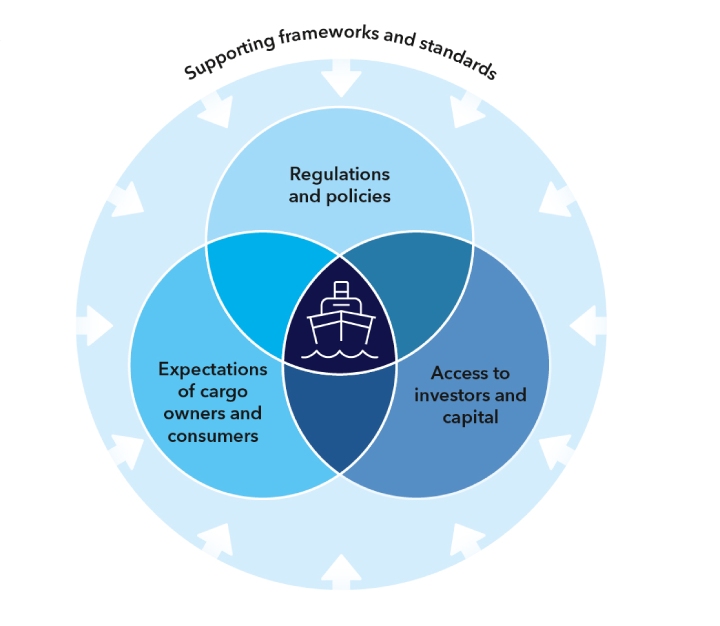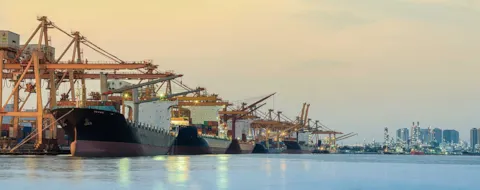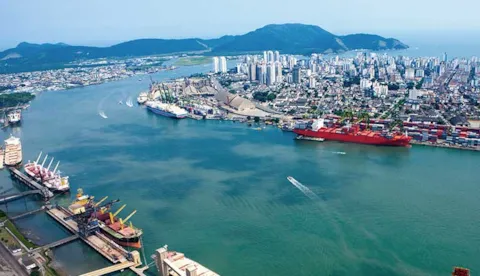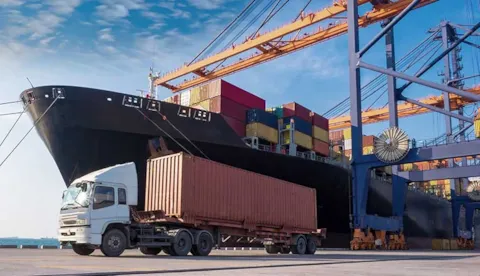KEY DRIVERS
A changing business environment means shipping companies need to adapt to ever stricter emissions regulations, pressure from cargo owners, the public, and the tightening requirements of investors.
EU ETS and FuelEU Maritime are already in force, while the IMO Net Zero Framework sets stringent well-to-wake GHG intensity requirements on energy used onboard ships globally from 2028. All ships will need to fulfil the minimum requirements, or will have to buy Remedial Units from the IMO Net-Zero Fund. These regulations are set to initiate an energy transition in shipping impacting the design and operations of all ships.
However, commercial pressure may incentivize shipowners to aim higher. Especially if poor performers become less attractive on the charter market, and struggle to access capital.
We expect three key fundamentals – regulations and policies, access to investors and capital, and cargo-owner and consumer expectations – to drive ship decarbonization through the 2020s and onward. They are supported by frameworks and standards specifying sustainability evaluation criteria and targets, GHG emission calculation methods, and reporting requirements.
Key drivers influencing ship decarbonization:




